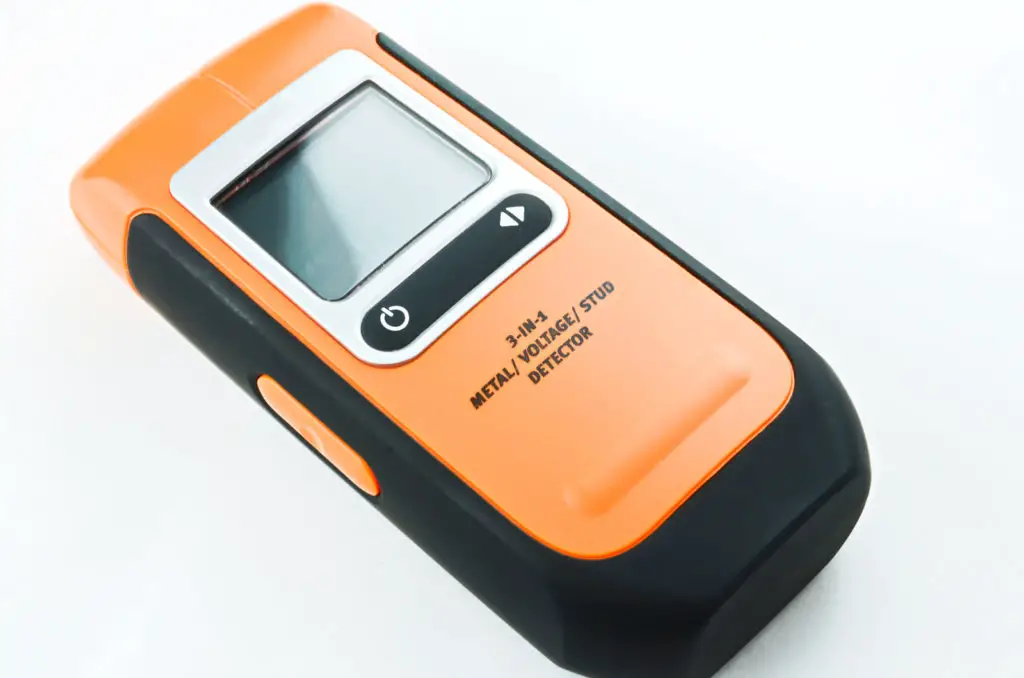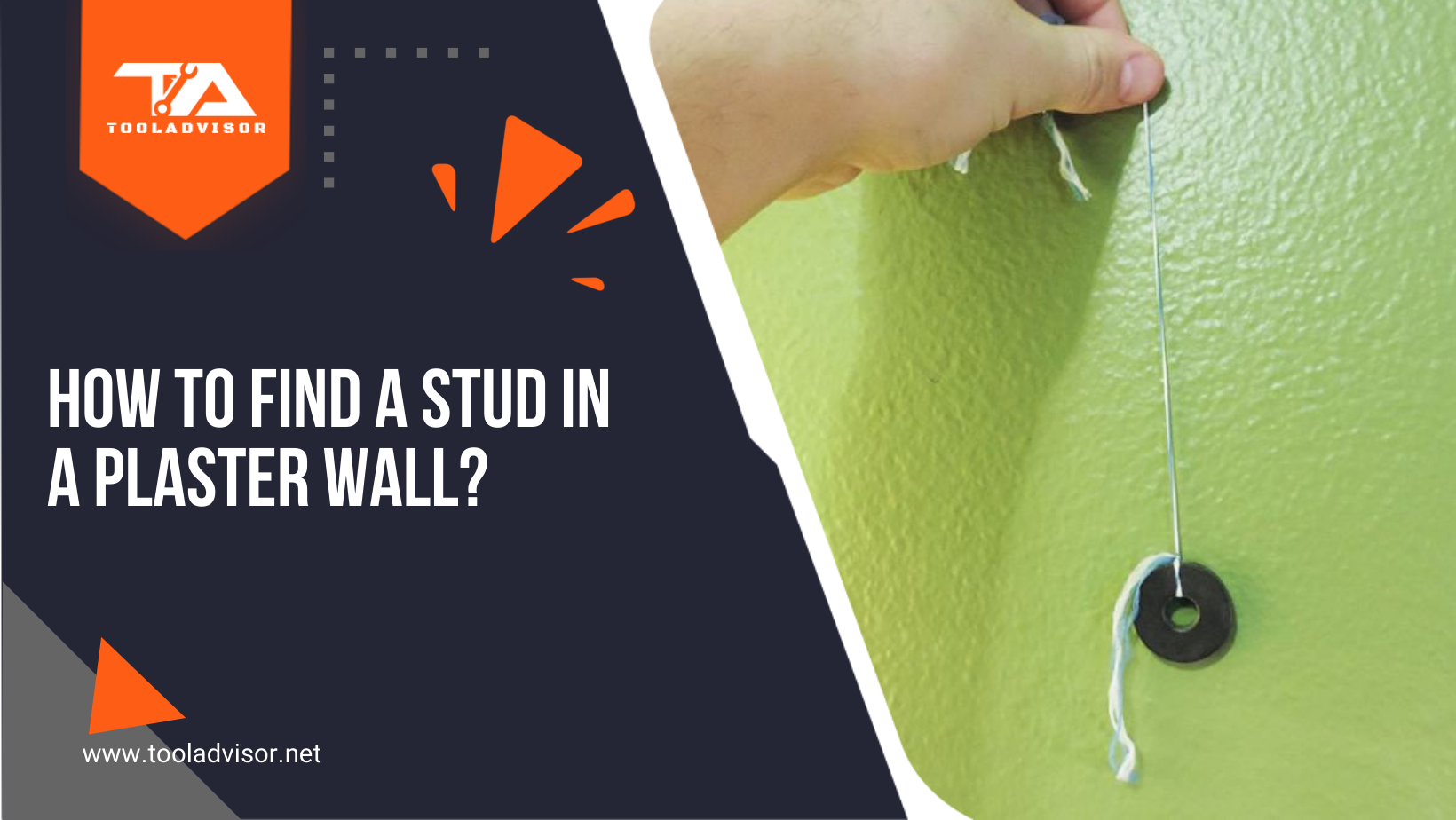So you’ve just moved into your new house. You’re very excited about finding a stud in the plaster wall to hang something on, but after days of drilling holes in the wall and finding nothing, you think there’s no more hope. And yes, finding studs in a plaster wall is not always easy.
But alas! Don’t worry…
The following article will show you how to find studs that elusive stud without getting frustrated. It’s really quite simple, and anyone can do it with some patience and practice. So read on to find out how…
Table of Contents
1. Find an Electrical Box
If you find an electrical box that is flush with the wall, then it’s probably in a stud. It also helps if the plaster isn’t covering any part of it – but finding the stud, in this case, can be even easier because almost all newer houses use steel studs, and finding steel studs (or vertical studs)when they’re covered by drywall is much easier than finding wooden studs.
In the event that there is no electrical box in your wall, but you do have a light switch or power-point in it, then finding a stud can still be done. Just follow the instructions below:
Step 1
The first step is finding the stud by finding where the electrical cable enters the house. This can be done quite easily by finding where there are light switches, power points, or ceiling fans on your wall.
All of these have something that extends into your wall from them – just follow it in to find where the cable enters. Make sure to take the switch plate cover off.
Step 2
Once you find where the cable enters your house, press your ear up against the plaster on the opposite side.
If it’s hollow, then there’s probably no stud in that section of wall. If it’s solid, then there probably is a stud there – finding which one will be easy if you follow this step below…
Step 3
Hold a small drill above the place where you pressed your ear to the wall – it should be right next to the cable. Drill down into the plaster at this point, creating a small hole in one of two places:

- If you can hear air moving through the space, then create another hole beside it and keep drilling until you feel an opening in the wall. This is a stud cavity – finding this will be easy.
- If you don’t hear anything moving through the hole, create another small hole next to it and keep drilling until there’s a large enough space for a nail or screwdriver to fit into. The air that you can feel pushing through means that there’s nothing behind the plaster on that side of the wall, so finding this will be easy as well.
Step 4
The last step is finding which stud it is by feeling behind the plaster with your fingers and finding out how far it extends into the wall.
Once you find that, drill a small hole just above it and push a thin nail through to scratch the back of the plaster.
If you go through, then there is a stud in that section of the wall – finding it will be easy from here on.
2. Knock on the Wall
Knock your hand along the wall to find out where studs are. When you hear more resonance from behind a space, then that’s a sign there is one in front too!
Keep knocking and see if anything else changes – you should slowly be able to work remember how many layers of drywall/plasterboard separated each other by using this technique…
I’m not sure why it seems so old-fashioned but gently tapping on different areas with my knuckles while seeking clues about their depth has provided me with some amazing results over time.
3. Use a Magnet
For the best magnetic method, you need a strong magnet. Dental floss or string work well with this technique but not necessarily pizzas because they’re too floppy and won’t stick to walls as we want them to!
All you have to do is grab magnets from around the house (the strongest ones) tie some string between two of them by their North poles so that when they are brought together it creates an opposing force that will keep things stuck if there was any attraction at all already present — then slowly walk across a wall in either horizontal direction while keeping everything aligned properly using only one hand until something sticks somewhere … done
4. Use a Metal Detector
Even though it makes you look like a genius because you can find objects and coins underground, finding studs in walls has nothing to do with finding things on the ground…we are finding metal but not by finding its magnetic properties…so walk around your house with an industrial-strength metal detector finding which area of the house is denser than others.

|
Note The wood studs will be denser than the surrounding drywall that is why finding them in a plaster wall is important for finding studs within. Also, based on your metal detector sensitivity, you may get false readings because of having cast-iron plumbing, old wiring, or anything |
|---|
Didn’t Find Stud? No Worries, You can hang heavy objects on Plaster Walls Without Finding Studs
Mark the places on the wall that you will put the brackets. Put them in straight lines (using a level) to make it easier for you.
Using a wood-boring bit to drill small pilot holes into each highlight made via the mounting crevices for each bracket is a great way to prevent damage.
The pilot hole protects the plaster from cracking and makes drilling additional holes simple.
For the size of the toggle bolt, drill a larger hole in accordance with the package tag’s diameter marking.
Slide the toggle bolt into each shelf bracket mounting hole and press it against the bolts roughly 1/4″ to one side.
Fold up the wings equally against the bolts, pushing in the bolts until they clean-sweep the lining and snap open. For a more secure hold, pull the tip of the bolt backward and fasten it with a screwdriver or drill.
Frequently Asked Questions
Can you use a stud finder on plaster walls?
With lath and plaster walls, the wall surface must have a consistent density level and be less dense than the wood stud. Lath and plaster walls, on the other hand, may not always be detected using a stud finder because of their very diverse method of construction.
How do you find a stud without a detector?
Through the knocking method, magnets, taps using the stud finder with a metal detector(stud finders), or finding dense parts of plaster walls are all ways to finding a stud.
How far apart are plaster wall studs?
Plaster walls can be 16 to 24 inches apart, though finding the studs can be difficult because of their unpredictability.
Are there studs in lath and plaster walls?
Yes, there are studs in the wood lath and plaster walls.
What is a vertical stud?
A stud is a vertical framing member which forms part of a wall or partition. Also known as wall studs, they are a fundamental component of frame construction and are typically made of timber.
Final Thoughts
Finding studs in plaster walls can be a tricky task, but with the right tools and techniques, you’ll have no problem finding one. The tips we’ve provided on “how to find a stud in a plaster wall” should help you get started finding your first stud location without too much effort!
When you find wall studs, mark them with a pencil and make note of it. You can use your finger or a thumbnail to test for hollow space in the wall before finding studs and marking them.
Do you have any tricks for finding studs? Let everyone know below in the comments!
